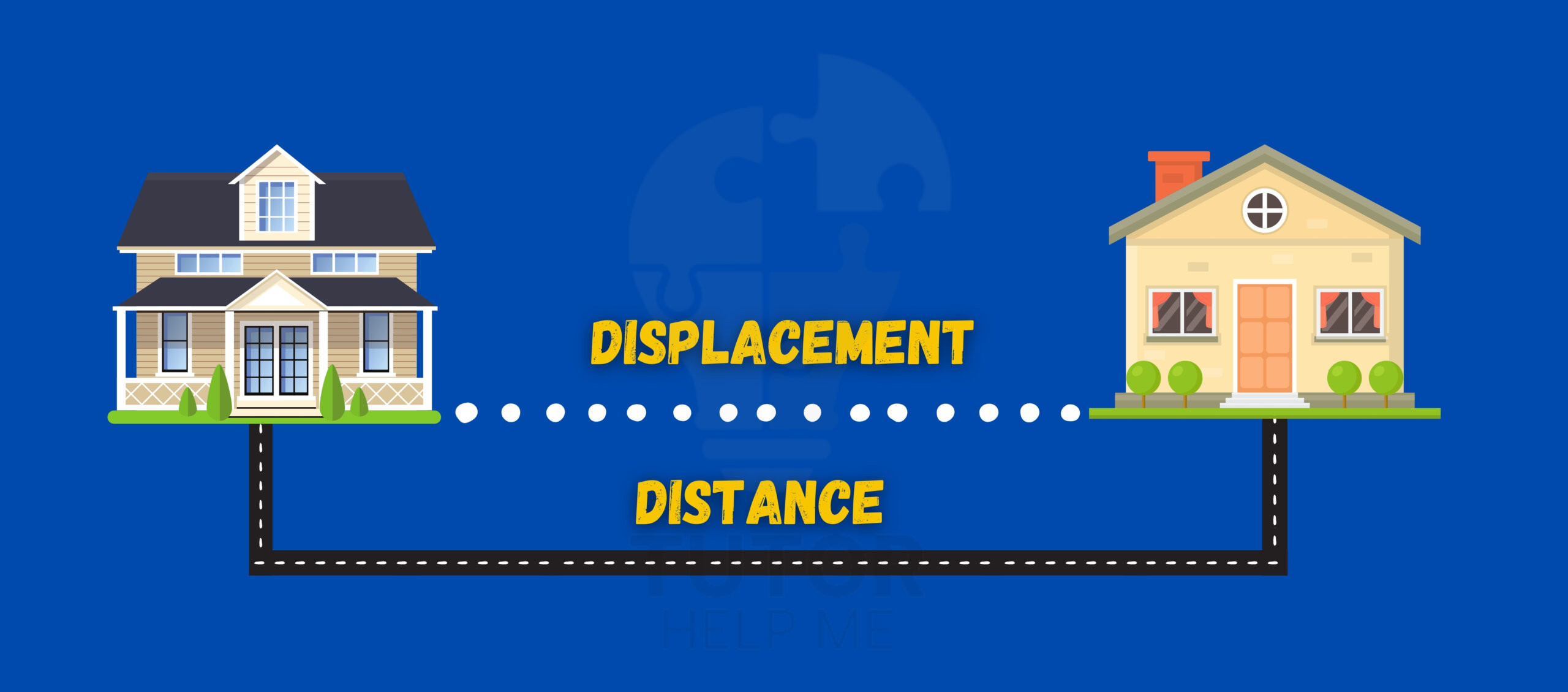Have you ever wondered about distance and displacement? Let me make it simple for you.
Distance tells you how far you have travelled, but displacement shows the shortest path between two points. They sound similar, right? But they are not the same, and knowing the difference matters.
Sit back, have a cup of tea, I will explain their meanings and differences clearly. By the end, you will understand both and how they work in real life. Let’s get started!
What is Distance?
“Distance is the total path covered by an object while moving, without considering direction.“
SI Unit of Distance,
The SI unit of distance is the metre (m).
formula for distance,
Distance = Speed × Time
What is Displacement?
“Displacement is the shortest distance between the starting and ending points, including direction.“
SI Unit of Displacement,
The SI unit of displacement is the metre (m).
formula for Displacement,
Displacement = Final Position – Initial Position
Real-Life Applications of Distance and Displacement
1. Sports and Athletics
- In marathons, runners cover a long distance, but their displacement from start to finish is usually shorter.
- In Formula 1 racing, a lap’s distance is the entire track, but if a car starts and ends at the same point, the displacement is zero.
2. Navigation and GPS
- GPS navigation systems use displacement to provide the shortest route from one location to another.
- A car’s trip meter shows distance, but GPS calculates displacement based on direct travel.
3. Space and Aviation
- Airplanes take curved routes due to the Earth’s shape, so their distance traveled is longer than their displacement.
- Astronauts in space travel long distances, but their displacement depends on their final position relative to Earth.
Distance Vs Displacement
| Aspect | Distance | Displacement |
|---|---|---|
| Definition | Distance is the total path covered by an object during motion. | Displacement is the shortest straight-line distance between two points. |
| Type of Quantity | Scalar quantity (only magnitude). | Vector quantity (magnitude and direction). |
| Direction Considered | Does not consider direction, only measures how much ground is covered. | Considers direction from the starting point to the ending point. |
| Value | Always positive or zero. | Can be positive, negative, or zero depending on the direction of motion. |
| Measurement | Measured in metres (m) or other distance units, e.g., kilometres (km). | Measured in metres (m) or other units, with direction specified. |
| Path | Includes the entire path taken, even if it’s curved or long. | Includes only the shortest path between two points. |
| Formula | Distance = Speed × Time | Displacement = Final Position – Initial Position |
| Relation to Motion | Focuses on the “how much” aspect of motion. | Focuses on the “where” and “how far in which direction” aspect of motion. |
| Real-Life Example | If you walk around a 400-metre track, your distance is 400 metres. | Your displacement is zero if you return to the starting point. |
| Representation | Represented as a single number (e.g., 10 metres). | Represented with both magnitude and direction (e.g., 10 metres east). |
| Use in Physics | Used to measure the total movement of an object, regardless of direction. | Used to study motion involving specific direction and position changes. |
Example to understand Distance and Displacement:
Imagine you walk 3 metres north, then 4 metres east.
- Distance: Add all paths covered (3 + 4 = 7 metres).
- Displacement: Measure the shortest path (5 metres northeast, calculated using the Pythagoras theorem).
Common Misconceptions About Distance and Displacement
Myth 1: Distance and displacement are always equal.
This is true only in straight-line motion. In curved or non-linear paths, distance is greater than displacement.
Myth 2: Displacement cannot be negative.
Displacement can be negative if an object moves in the opposite direction of a reference point.
Myth 3: If distance is large, displacement must also be large.,
A person walking in a circle may cover a large distance, but if they return to the start, their displacement is zero.
Why Choose Tutorhelpme Physics and Maths Tutor
- Qualified Experts: Learn from experienced physics and maths tutor with strong knowledge in Physics and Maths.
- Customised Lessons: Lessons tailored to your learning style and pace.
- Flexible Timings: Schedule sessions at times that work best for you.
- Affordable Fees: High-quality tutoring at budget-friendly rates.
- One-on-One Attention: Get individual support to focus on your specific needs.
- Interactive Learning: Engage in live, interactive sessions with modern tools and resources.
- Exam Preparation: Special guidance for GCSEs, A-levels, and other exams.
- Proven Results: Many students have improved grades and confidence with our help.
- Comprehensive Materials: Access additional study materials, tests, and problem-solving techniques.
- Online Convenience: Learn from anywhere with seamless online classes.
Struggling with physics concepts like motion, speed, and displacement? TutorHelpMe’s expert tutors break down complex topics with simple explanations, real-life examples, and interactive sessions.
Read More What is Velocity? Units, Formula, Types
FAQ’s
Can displacement be greater than distance?
No. Displacement is always equal to or smaller than distance because it represents the shortest path.
Why is displacement zero when returning to the starting point?
Because the initial and final positions are the same, so the net change in position is zero.
How does displacement help in physics calculations?
Displacement is useful in vector calculations, motion equations, and finding velocity.

